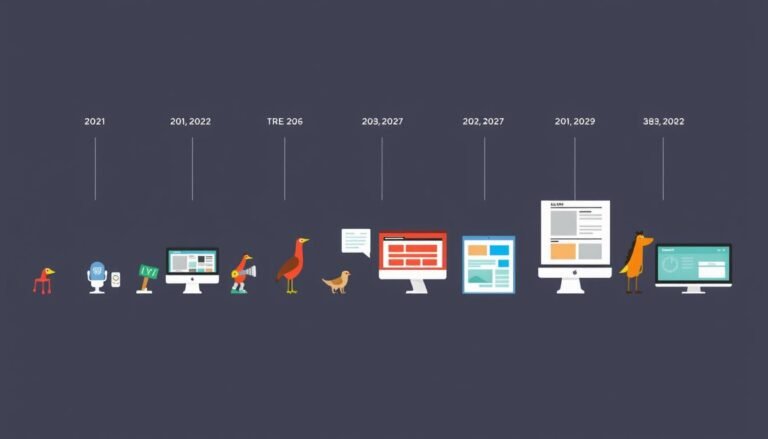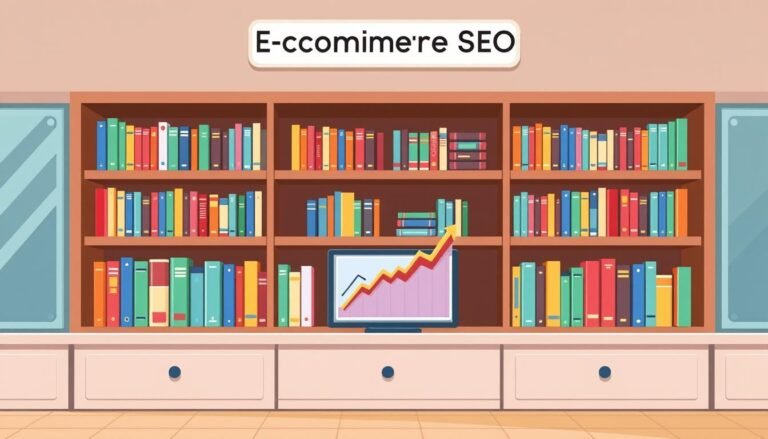The Ultimate Guide to Retargeting Campaigns
Did you know that only 2% of shoppers buy something on their first visit to a website? This fact shows how brands often miss the chance to reach out to potential customers who didn’t buy anything. Retargeting can boost conversion rates by up to 150%. It’s a key strategy in digital marketing that’s more important than ever, especially with changes like the end of third-party cookies.
This guide will cover everything you need to know about retargeting campaigns. We’ll look at the basics and the differences between retargeting and remarketing. Whether you’re an experienced marketer or just starting, you’ll find tips and strategies to improve your retargeting efforts. Let’s dive into how to make your campaigns more effective!
Key Takeaways
- Retargeting can significantly increase conversion rates, with potential boosts of up to 150%.
- Three out of four customers abandon their shopping carts, leading to substantial lost revenue.
- Email retargeting campaigns have higher engagement rates when executed shortly after cart abandonment.
- Retargeting ads can enhance brand visibility, resulting in over 1046% increase in search interest.
- Utilizing both pixel-based and list-based retargeting methodologies allows for tailored advertising strategies.
- Effective retargeting not only drives immediate sales but also enhances customer lifetime value (CLTV).
Introduction to Retargeting Campaigns
In the digital marketing world, retargeting is a key tool to reach people who have visited a brand’s site before. Most visitors don’t buy on their first visit, highlighting the need for good retargeting ads. These ads help bring users back and may lead to sales.
What is Retargeting?
Retargeting means showing ads to users who showed interest but didn’t buy. It uses browser cookies or tracking pixels to find visitors and show them ads on other sites. This boosts brand awareness and can make users 70% more likely to buy.
How Does Retargeting Work?
Retargeting uses data to show ads to users who didn’t convert. There are two main types: pixel-based and list-based retargeting. Pixel-based uses code on websites, while list-based uses a customer database. This helps brands target users by their actions and interests.
For example, users who spent a lot of time on a site are shown ads to come back. Advertisers can also set how long after a visit to show ads. Google Ads and Facebook offer different types of campaigns to reach various audiences. This way, brands remind users of their interests and build a positive brand image, as 30% of consumers like seeing these ads.
Understanding Remarketing vs. Retargeting
In the world of digital marketing, knowing the retargeting differences between remarketing and retargeting is key. These terms are often mixed up, but they serve different customer engagement needs. This part will show you the main differences and help marketers know when to use remarketing or retargeting.
The Differences Explained
Remarketing is about getting back in touch with customers through channels you already use. This can be through emails or ads on social media. On the other hand, retargeting tries to get users interested again who have visited your website but didn’t buy anything. It uses ads on other websites to draw in potential customers.
The table below shows the main differences:
| Aspect | Remarketing | Retargeting |
|---|---|---|
| Target Audience | Existing customers from owned channels | Any visitor of the website |
| Data Usage | Explicit data (emails, previous purchases) | Implicit data (cookies, browsing behavior) |
| Platforms | Email, social media, and owned media | Third-party websites via display ads |
| Goal | Re-engage and upsell | Acquire new customers |
When to Use Each Strategy
Knowing when to use remarketing or retargeting is crucial for marketing success. For brands with products people buy again and again, remarketing is great for building strong customer ties and loyalty. Using emails to remind customers about products or special deals can boost sales.
For businesses focusing on one-time buys, retargeting is better. It’s good at turning website visitors into buyers. By showing ads on different websites, brands can spark interest and increase sales.
The Ultimate Guide to Retargeting Campaigns
Successful retargeting campaigns rely on good data collection. Using both first-party and third-party data makes ads more effective. This guide shows how to collect first-party data and use third-party data for better retargeting results.
Collecting First-Party Data
First-party data comes from customers through different interactions. It includes their behaviors, what they buy, and what they like. Brands can get this data through several ways:
- Using CRM systems to track customer interactions
- Offering discounts or special content for email sign-ups
- Surveys to learn what customers prefer
By using data to retarget, brands can make ads that speak directly to their customers. This makes it more likely that customers will become loyal.
Leveraging Third-Party Data
Marketers are turning to third-party data more often for retargeting. This data comes from cookies or tracking pixels. It shows what users do online and helps brands find new potential customers. But, with limits on third-party cookies, focusing on first-party data is key for good marketing.
Combining first-party and third-party data makes ads more targeted. This helps brands reach people at the right time and place. Using both types of data helps fill in the gaps in how customers interact with brands, making retargeting more effective.
Effective Retargeting Strategies
To make your retargeting work better, it’s key to use smart strategies. One top way is behavior-based targeting. This lets marketers make ads that match what users did on your site before. For example, if they looked at certain items or put them in their cart, the ads can be more relevant.
This method can boost conversion rates by a huge 43%. It shows how important it is to know what users do.
Behavior-Based Targeting
By focusing on behavior, brands can reach people who already showed interest. This keeps them thinking about their past actions and keeps your brand in their mind. Segmenting your audience by their actions or other traits is also key.
This way, you make sure the right ads go to the right people. It makes your campaign work better.
Segmentation Techniques
Segmenting users by their actions or how long it’s been since they visited can make targeting better. Different groups might like different messages, which can make them more engaged and likely to buy. Using ads on Google Ads, Facebook, and Instagram can also help a lot.
People spend a lot of time on social media. Adding these channels to your retargeting can really help your marketing.
Multi-Channel Approach
Finally, a good retargeting plan should use many channels. Testing different ads and keeping messages the same across platforms helps streamline your efforts. This keeps you learning what works best with customers.
It builds stronger loyalty and increases the chance of making a sale. This makes sure your retargeting does what you want it to.
Source Links
- The Ultimate Guide to Email Retargeting | AdRoll
- What Is Retargeting? How To Set Up an Ad Retargeting Campaign
- What is Retargeting? Everything You Need to Achieve Greater ROI
- Your Ultimate Guide to Retargeting Ads
- Remarketing Vs. Retargeting: Are They The Same Thing?
- Retargeting vs. Remarketing: Are They Really the Same?
- Retargeting vs. Remarketing: Which One Should You Choose?
- The Ultimate Retargeting Guide for 2023 – Creatopy
- The Ultimate Guide To Retargeting For Ecommerce Businesses – STRYDE
- Complete guide to retargeting ads and how to set them up
- The expert’s guide to retargeting – 2024 edition
- 5 Retargeting Strategies for Social Media | AdRoll








